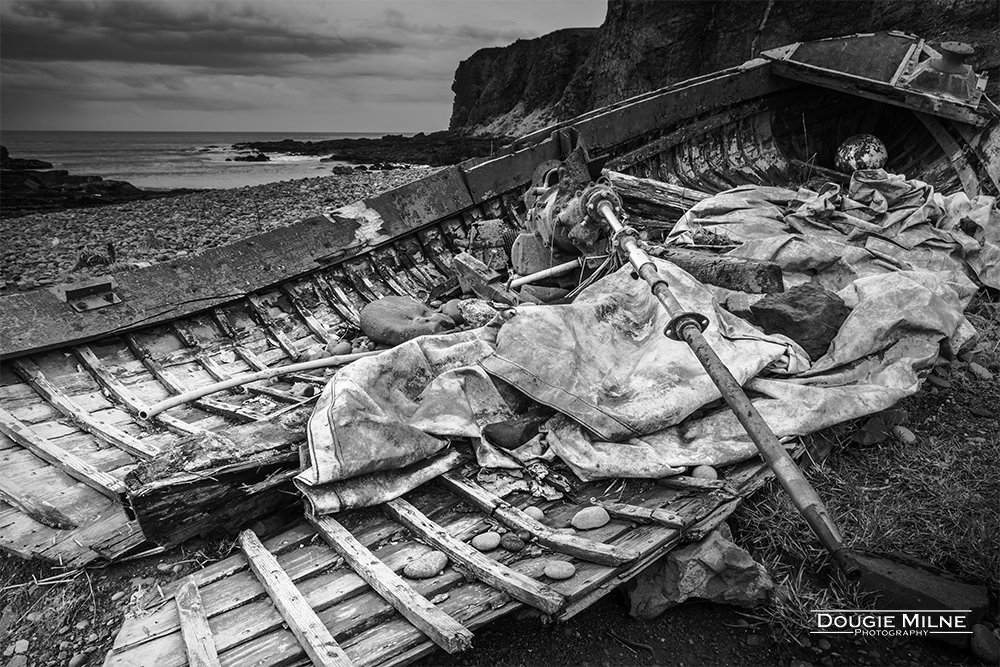
Click on picture for buying options
TweetWrecked boat, Auchmithie Harbour near Arbroath, Angus.
Built in 1878, this wooden lugsail, or lugger, was driven from its moorings at Auchmithie Harbour on 1 February 1903. The contents, I suspect, are newer.
Lugsails are a type of sail that has been used for centuries on various types of vessels, including small boats and larger sailing ships. They are characterized by a four-sided sail that is rigged with a spar along the foot of the sail. This spar is known as a "yard," and it typically runs parallel to the mast.
The lugsail is attached to the mast along its leading edge (the luff) and to the yard along its top edge (the head). The bottom edge of the sail (the foot) is often attached to a boom, which helps control the shape of the sail and allows the sailor to adjust its position relative to the wind.
One of the distinctive features of lugsails is that they can be rigged without a boom, allowing for a simpler and more flexible rigging arrangement, which is particularly useful on small boats. Lugsails are often raised and lowered by hand, making them practical for smaller vessels operated by a small crew or even a single sailor.
Luggers, on the other hand, are a type of sailing vessel that traditionally used lugsails. These vessels were commonly used for fishing, cargo transport, and other maritime activities in coastal regions. Luggers typically had a single mast and were rigged with one or more lugsails, depending on their size and purpose.
The lugger's design made it well-suited to a variety of tasks, as it was relatively easy to handle and could manoeuvre in shallow waters. Luggers were particularly popular in regions with strong maritime traditions, such as Scotland, where they were used for herring fishing and other coastal activities.
While lugsails and luggers are less common today than they were in the past, they still have a devoted following among traditional sailors and enthusiasts of classic sailing craft. They are prized for their simplicity, versatility, and historical significance, and they can often be seen participating in sailing regattas and other maritime events around the world.
This picture was taken on 29 January 2024.